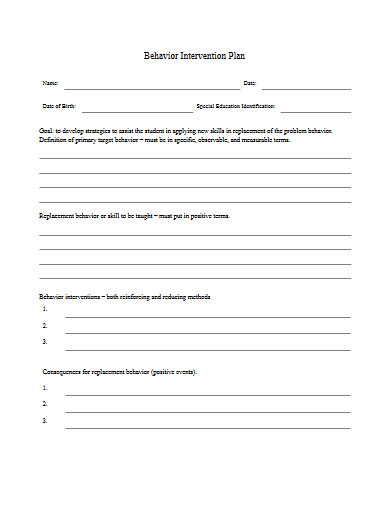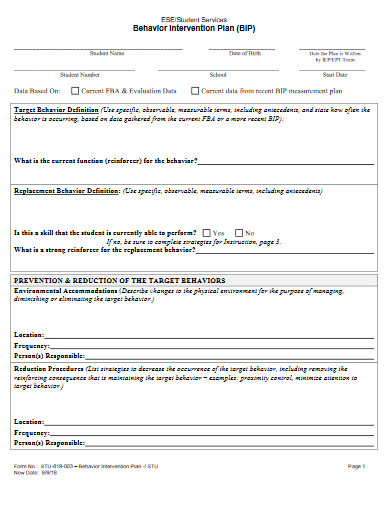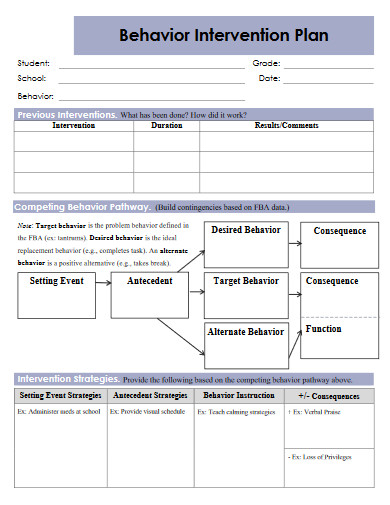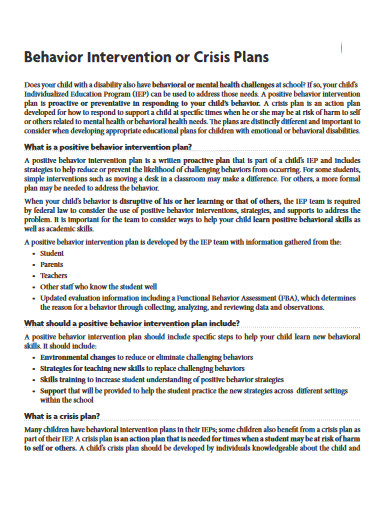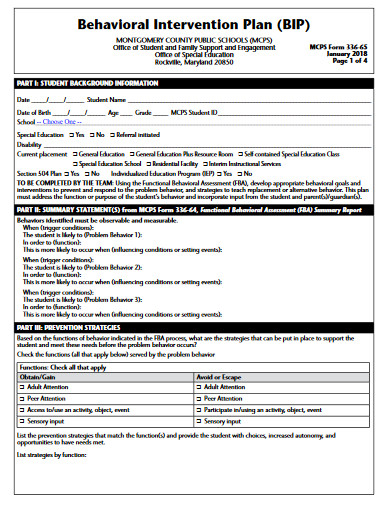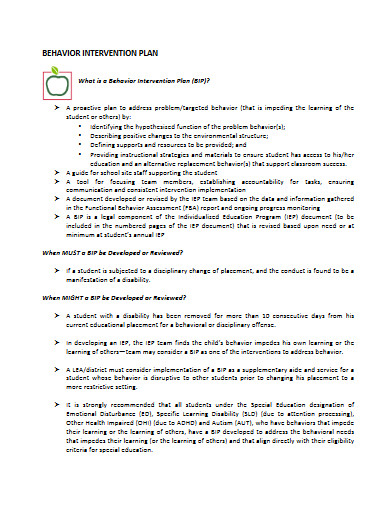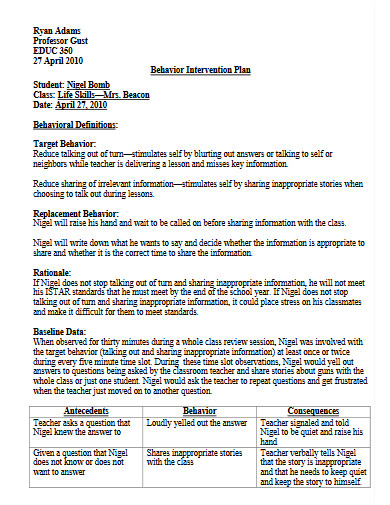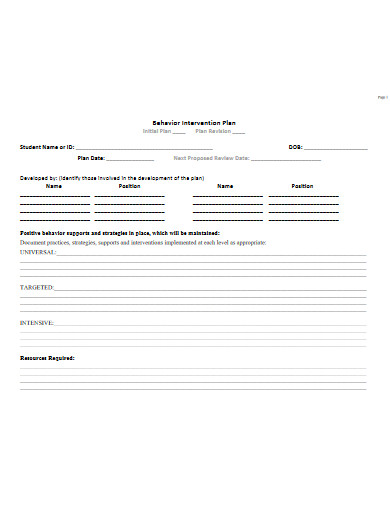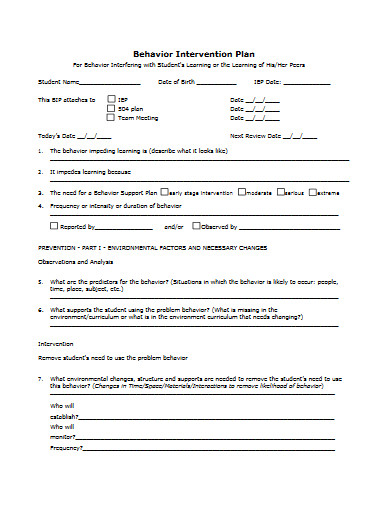20+ Behavior Intervention Plan Examples to Download
Not all children believe that going to school is solely for the sake of learning. Some of them claim it is a playground, while others believe it is a day for friends. It’s because they saw new people and a new environment. Children who misbehave at school, on the other hand, have a difficult time studying. They are prone to getting into mischief from time to time. A school can enforce a formal plan to help them act.
Here are factors you need to know about behavior intervention plans:
20+ Behavior Intervention Plan Examples
1. Behavior Intervention Plan Template
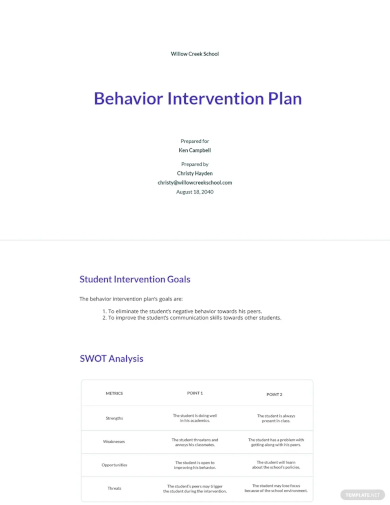
2. Functional Behavior Intervention Plan Template
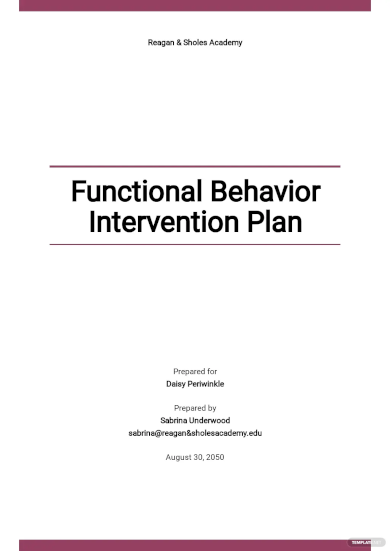
3. Preschool Behavior Intervention Plan Template
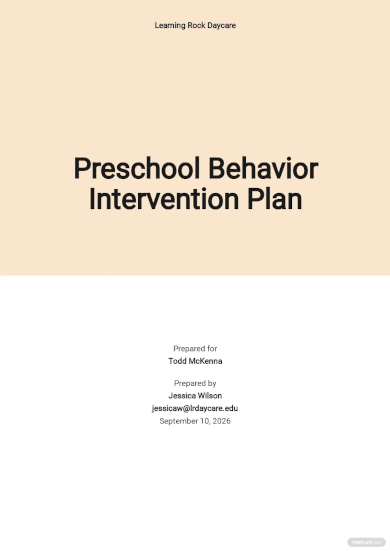
4. Classroom Behavior Intervention Plan Template
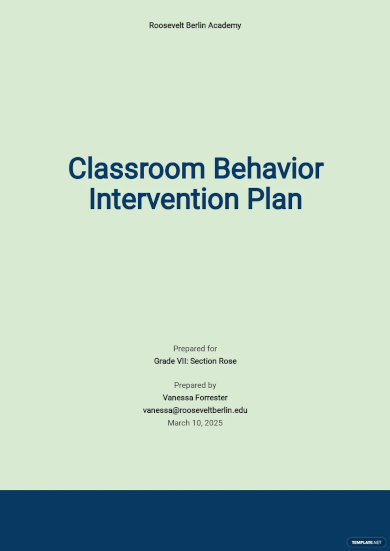
5. Informal Behavior Intervention Plan Template
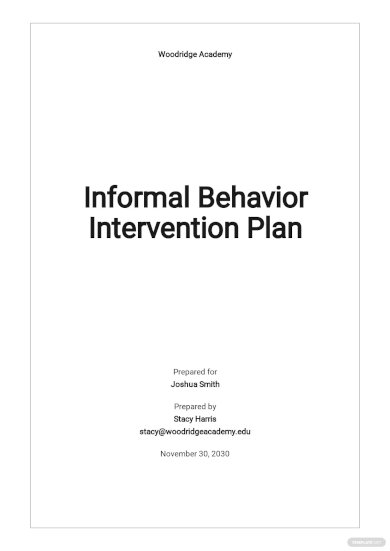
6. Special Education Behavior Intervention Plan Template
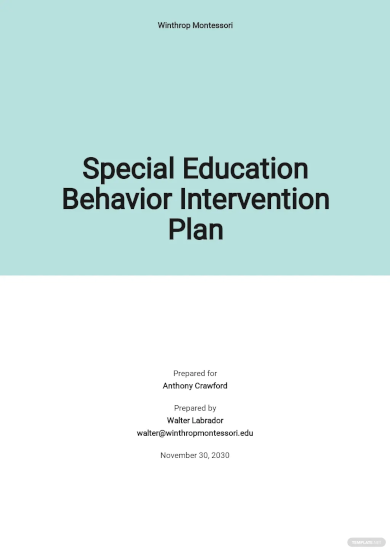
7. High School Behavior Intervention Plan Template
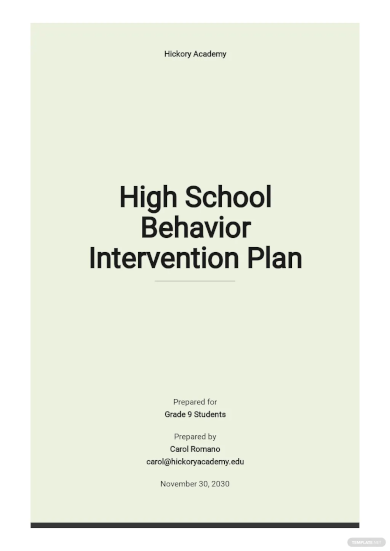
8. Free Sample Behavior Intervention Plan Template
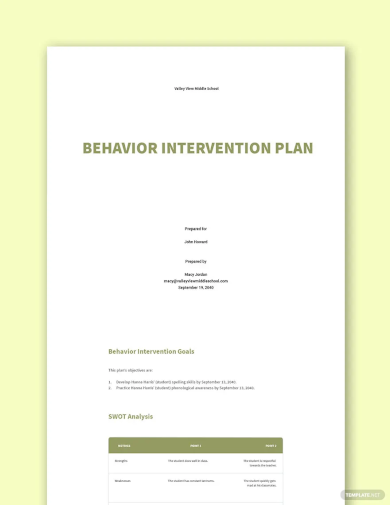
9. Behavior Intervention Lesson Plan Template
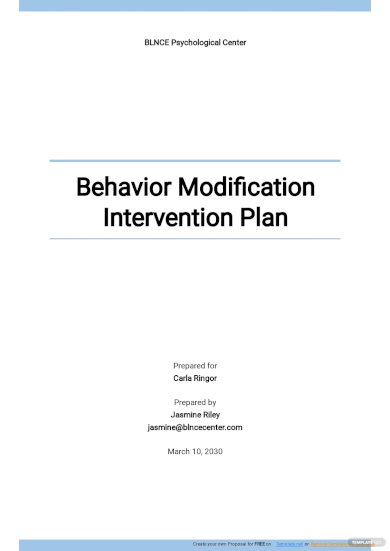
10. Behavior Modification Intervention Plan Template
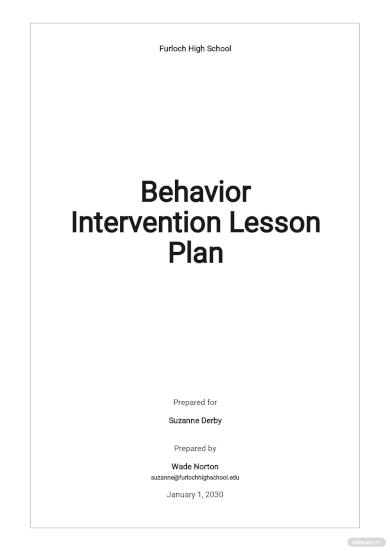
11. Behavior Intervention Plan
12. Student Behavior Intervention Plan
13. Behavior Intervention Plan Template
14. Positive Behavior Intervention Plan
15. Behavior Intervention Plan Example
16. Behavior Intervention or Crisis Plan
17. Behavioral Intervention Plan in PDF
18. Sample Behavior Intervention Plan
19. Behavior Intervention Plan for Student
20. Behavior Intervention Plan Form
21. Basic Behavior Intervention Plan
What Is a Behavioral Intervention Plan?
A behavior intervention plan is a written strategy for teaching and rewarding appropriate actions. It may be a single page or a series of pages. Its goal is to avoid or stop misbehavior rather than just punishing the kid. The plan has three parts. The strategy begins with a list of the problematic behavior. Second, it explains why something is happening. Lastly, it incorporates methods or supports to assist.
How to Create a Behavioral Intervention Plan?
Each behavior management strategy is involved in assessing the individual needs of each student. However, if you deem the following, your plan would be destined for success:
1. Prevention Strategies
Prevention techniques aim to keep the problematic behavior meaningless. It means that the pupil no longer has to partake in it for the behavior’s purpose to be fulfilled. Consider the following changes you can make to the environment:
- Prevent the antecedent from happening.
- Reduce the aversiveness of the setting occurrence or antecedent.
- Reduce the likelihood of the precursor cueing the action.
- Make use of tried-and-true antecedent strategies.
2. Replacement Behavior
Replacement habits work to make the problematic behavior inefficient, which means they are a more effective way for the pupil to fulfill the purpose of their behavior than the problem behavior. Teach the student a new activity that helps them to accomplish the same goal as their prior behavior. Ask for a break or new job to distract themselves or requesting time to chat to get adult attention.
3. Data Collection
Set a target about where you expect the student’s actions to be in a specific time frame, and compare the student’s behavior to the goal you execute, the behavior intervention strategy. To accomplish it, or to make a move for the student to continue to progress, don’t forget to collect data.
4. Checks for Integrity
When executing a behavioral intervention plan, make sure that everyone involved follows the exact schedule intended. Create a strategy for monitoring the implementation’s credibility. Use the behavioral intervention plan as a checklist, and go over it every day, weekly, or monthly. Examine some parts of the schedule that aren’t part of the plan.
FAQs:
Who is the recipient of a behavior intervention plan?
A behavior plan is not necessary for some children. They’re really for kids who have a lot of problems with proper actions, and it’s getting in the way of their learning. Any students also have 504 plans or Individualized Education Plan (IEP) to help them succeed in education.
Who is qualified to create a behavior intervention plan?
Once a Functional Behavioral Analysis (FBA) is complete, the behavioral intervention plan follows. The instructor, a school counselor, or a behavior therapist can write the BIP plan. A functional behavioral analysis can classify operationally target patterns as well as antecedent situations.
What are the various forms of behavioral intervention strategies?
Behavior intervention strategies involve designing routines, implementing silence, implementing silent signals, setting goals, and assigning tasks. These strategies help foster positive behaviors from individuals while concurrently defeating negative behaviors.
The behavior intervention plan’s objective is to render the child’s destructive actions ineffective, inefficient, and insignificant. You will teach students new, effective ways to meet their needs both in and out of the classroom. Therefore, don’t hesitate to use and follow the given templates and tips above.



